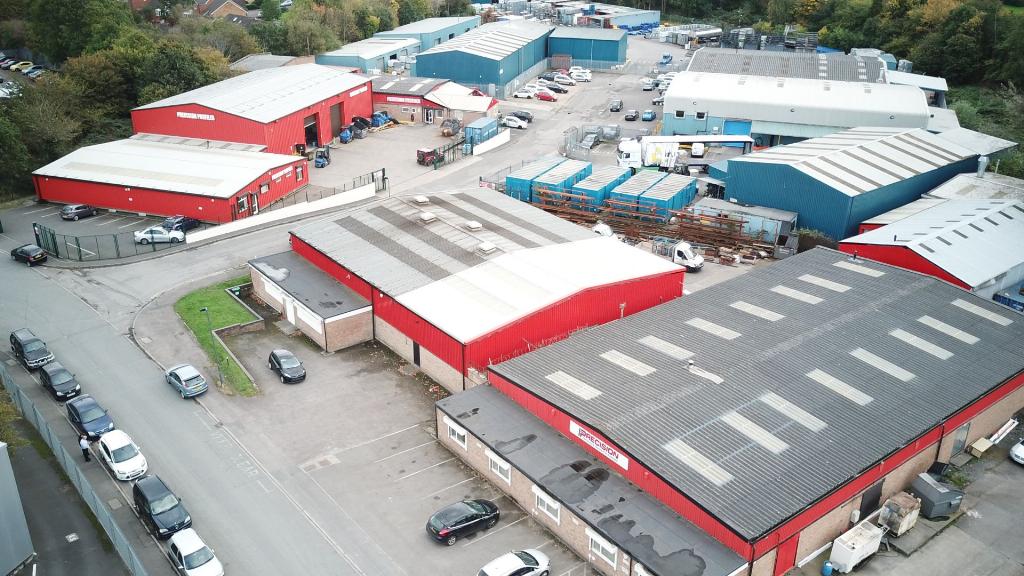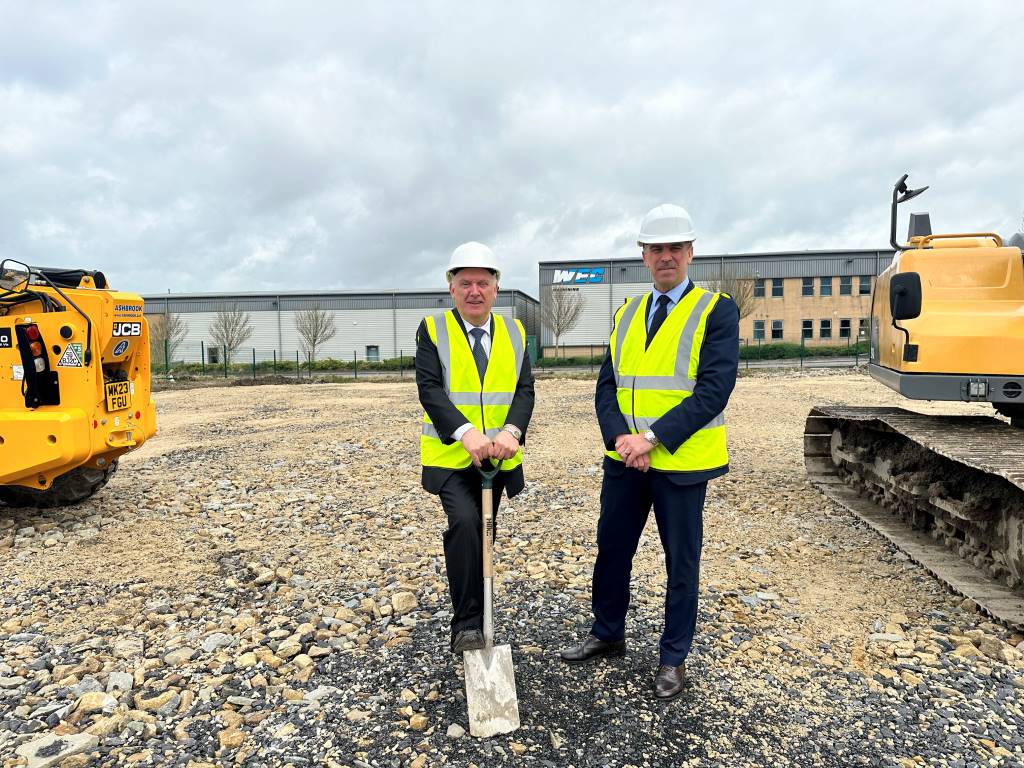Feed it, trust it, work with it

Precision Profiles is a well-established company based in Bristol, Avon with more than 25 years’ experience of aerospace and aircraft engineering. The Manufacturing Division specialises in the production of airframe tooling and engine overhaul tooling, including special purpose jigs and fixtures, but like many companies, prioritising workflow was a real challenge. That was until it installed a production control system from Tricorn Systems. PES reports.
Precision Profiles has a highly-skilled and experienced workforce and from modern facilities it manufactures and supplies a national and international customer base, with a group turnover in excess of £24 million. Customers supported by Precision Profiles include Airbus, Boeing, Embraer and ATR. Engines supported include General Electric, CFMI (CFM56), IAE, Pratt & Whitney, Rolls-Royce and Allison.
Prioritising workflow is a challenge for any manufacturing company and Precision Profiles is no different in that regard as production manager, Alan Herbert reveals: “As in many companies, the prioritisation of jobs depended on which customers were making the most noise or which jobs had the highest value,” he says.
“All other work would progress through the production process in an order that was difficult to determine. Jobs would be prioritised through the system only to find that at assembly time parts and/or components were missing – either overlooked during manufacturing or bought-out parts had not been delivered.
“At assembly time, we would discover that vital external processes like weld inspection, load testing or painting had not been completed which would ultimately add days to the delivery date. It would not be unusual to find that the in-house paint shop was completely overloaded and subcontract painting had to be sourced. We would go cap in hand to our subcontractors and ask if they could fit us in. This is not the position you want to be in when it's nearing the end of the month and you need to get the job out to the customer.”
He continues: “It became clear that we needed something to give us a view of all jobs and their status as they were progressing through the manufacturing process: we needed to see potential bottlenecks in the workshop before they occurred; we needed the ability to give our customers an accurate delivery date or plenty of notice if we thought we going to run into trouble; and we needed the ability to see the knock-on effect of giving a particular job priority over the rest of our production.
“Having in excess of 100 work centres we found it very difficult to produce work-to lists for each machine/resource so a new ‘work centre’ would be defined to suit specific job requirements – even though a similar work centre already existed.”
The decision to implement a scheduling/planning system was, however, not unanimous amongst the management. Most of the team – Mr Herbert included – were doubtful it would help in any way. His personal feeling was that the company did not have the discipline required at all levels to make a success of a scheduling system.
“We needed to make sure,” he states, “so it was agreed with Tricorn that we could pilot the system for a number of months to ensure that it would work in our environment. We knew that we would have to adhere to key processes and disciplines to make it a success.”
Pre-implementation preparation
Nearly every element of Precision Profiles’ manufacturing processes needed addressing in some way prior to achieving a successful implementation.
“Firstly, we reduced the number of work centres in half to keep the cost of the scheduler within budget,” Mr Herbert explains, “but it was argued that if we did that we would lose track of detailed operations. However, my argument back was ‘did we ever have track of our operations’?

“As an example, we made a number of changes in our fabrication shop. We originally had shear, punch, bend and weld as separate operations and these were amalgamated into one work centre called SMW or ‘sheet metal work’. Immediately we could start to see the wood for the trees.
“The knock-on effect was mostly felt in our planning department where all live jobs needed to be re-planned to reflect the changes to our work centres. Every operation on every route card required the addition of set-up times and run times. The emphasis was to get these times as accurate as possible as this would have the most impact on the scheduler. It's no good guessing or trying to kid the system, the outcome would soon become apparent.
Precision Profiles rely heavily on part master templates for repeat work and all of these needed updating in the same way.
“Strangely our shopfloor operators offered the least resistance,” Mr Herbert recalls. “The system was sold to them on the basis that the frustration of not knowing what order to do their work would be eliminated. They would only be given work when the material was available which would preclude them having to hunt around for it. The need to break down a machine for an urgent job would potentially disappear.”
Successful scheduling
External subcontract work also required an overhaul. The Tricorn:Scheduler needs to know how many days the job is going to be offsite. As with operation times it’s critical to get this as accurate as possible as Mr Herbert affirms.
“The subcontract operation needs clocking onto as soon as the job leaves the premises; the clock starts ticking from that point. If the subcontractor advises you that the job is going to take longer you must let the scheduler know how long the delay will be. When the job arrives back from subcontract the countdown clock needs to be stopped by jobbing off or ending the operation. This then brings the next operation to the front of the queue and the machine operator is notified that the next operation is ready to go.
“In addition, the disciplines needed to make the subcontract processing a success had an impact on purchasing, production control and goods inwards,” Mr Herbert says. “The assembly department would see finished components arrive in their kit boxes in what seemed a haphazard sequence. They needed convincing that all the components they require to complete the job will arrive in good time for them to complete the assembly task in time to meet the required delivery date. The scheduler enabled us to do that.
“One additional positive knock-on effect of preparing to implement the scheduler was that our operational process changes improved our systems before even turning on the software. However, with over 3,000 operations going through our manufacturing process at any one time there is no way any person can organise throughput without the help of a computer-based system.”
Summary
Mr Herbert concludes: “I have been converted from a complete doubter to an advocate. The rewards outweigh the effort needed to implement the system by far; we can look at the information presented by the scheduler in full confidence that it is correct.
“We can now see bottlenecks and deal with them in advance because the shop loading and prioritisation is completely visible. Reports derived from the scheduler are meaningful and accurate. We can see where we are going, not just the few but everyone using the system. As users become familiar and confident with the scheduler output, the desire to feed the system with correct information becomes infectious. I cannot foresee a time in our company where the scheduler is turned off or ignored.
“Feed it, trust it, work with it and you won't regret it.”
Precision Profiles www.precisionprofiles.co.uk
Tricorn Systems www.tricornsystems.co.uk














